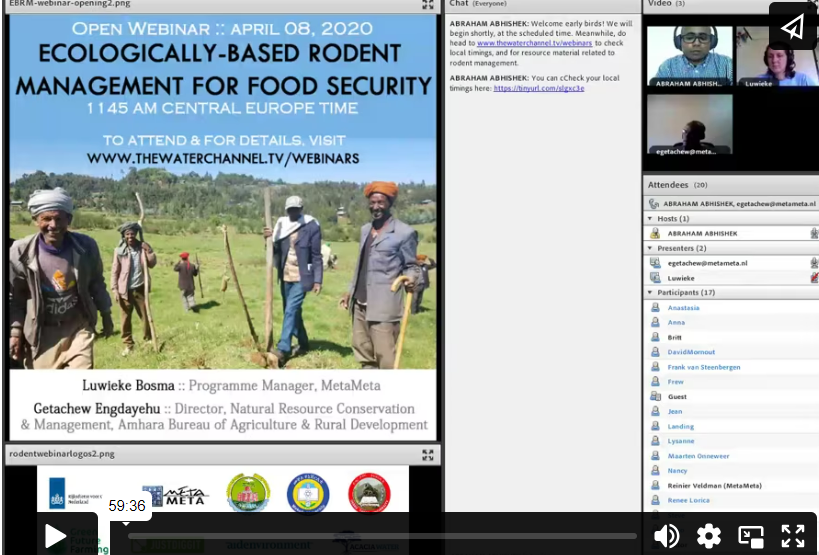Programs we are proud of
Intro borro bererro te volo voloreribus rerum aliquis expersperrum eum num fugit, eris pos ad maximus non nem repedis aliqui con non core eos alitate nem coritatur mossit verspel in re eos debitat aboriberovid expedis num quid est, quundis autatur, eumquibuscia ide niscitiis idus ipsam fugitia delenisimus voluptaquia cum in cus.
Filter

Rodent control in India
The existing knowledge of the environmental, cultural, biological, mechanical and chemical methods of rodent control in India is reviewed. Considerable … Continued

Rodent Pests of Agriculture and Their Control in the Near East Region
In this paper, information on the status of rodent problems in the Near East region is reviewed. Twenty-two species of … Continued

Roles of women SMEs in producing and promoting bio-rodenticide
Video showing the roles of women SMEs in production and promotion of bio-rodenticide in Ethiopia.

Ecologically-based Rodent Control (April 08, 2020)
In this webinar, Luwieke Bosma from MetaMeta and Getachew Engdayehu from Amhara Bureau of Agriculture and Rural Development share their … Continued

Food Security’s Rodent Problem
Webinar on rodents ecology and biological & community-based approaches for their management. Read more >

Controlling Rodents – The Eco-friendly Manner (October 2, 2017)
Webinar on rodent control. Read more >

TBS: an Ecologically-based Rodent Management technique that can work for Ugandan Farmers
Blog on the Trap Barrier System, an EBRM strategy to reduce rodents populations in fields. Read blog >











